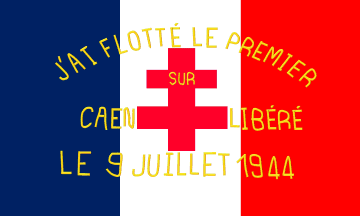
Sitting outside a café, I find myself on the quiet streets of Bayeux, France. The small town, nestled in the Calvados region of France, is a centerpiece in the reembrace of the liberation of France during the first days of liberation after D-Day. The town hosts a population of about 12,000 individuals; however, it feels much larger with the constant flow of tourists in the city. Outside the quiet town, cows and sheep call the sprawling fields of the region home. Minutes outside of the town center, rows of simple white marked and unmarked graves lie outside the city of Axis, Allied, and civilians who fell during the liberation efforts of France. On 14 June 1944, a tall and lanky General Charles De Gaulle strode amongst the incoming parades of liberated Bayeux mere days after the Normandy landings. Sitting in the café, complex imaging filled my thoughts of the narrow and war-torn streets of Bayeux bustling with parades, civilians, army personnel, and tanks upon the arrival of the Allies after liberation.

The British Memorial of fallen soldiers in the Normandy invasions within 5 minutes of the town center.
Today, the rural town of Bayeux still bears the scars and remembrance of WWII. Buildings show the marks of tanks that once traveled the narrow streets. I find myself seeing the town marked by the harsh remembrance of the cost of the landings, yet a celebratory atmosphere envelops the city, especially leading up to June. Leading up to the annual celebrations, the normal population explodes as history enthusiasts and veterans alike return to the historic town to remember the fateful liberation. The remembrance of the war showcases the binary of French memory, a constant battle between commemorating collaboration and resistance.

A drawing on a local shop that depicts the 4 major forces that participated in the D-Day landings in Normandy. The French flag was utilized in this art, but solidiers bore the French Resistance Flags during the landings. The crest of Normandie can be seen at the top of the building with the two lions.
This year marks the 80th anniversary of D-Day. While D-Day celebrations and subsequent liberation festivities occur yearly, this year’s atmosphere is uniquely special. During my stay, the town has transformed into an “Allied melting pot,” welcoming tourists from Allied nations who come to commemorate the world-changing event. I would not have expected such a melting pot of languages and cultures in the Calvados region. The intersection of a mass of cultures was scheduled for major cities but not the rural area of Calvados. As an American, I feel welcomed in this small town as American, British, Canadian, and French flags fly through the city. These countries are most well-known in the D-Day landings, but remembrance often forgets the efforts of other countries in the landings, such as Belgium and Luxemburg. While these countries did not play significant roles in the landings, the French remembered their efforts by paying homage to their contributions by flying their flags throughout the city alongside other countries’ collaborations. Throughout the city, locals and tourists dine and shop in areas that proudly display the flags and depictions of Allies in celebratory spaces. Commissioned drawings of depictions of Allied soldiers and civilians during liberation celebrations. This ranges from Much controversy surrounds the French remembrance of their part in WWII. However, the town of Bayeux surpasses all these notions by celebrating the liberation of Normandy as a momentous achievement, which remains a sacred celebration even 80 years later. Bayeux’s civilians continue to welcome the landings’ veterans with the same celebratory spirit as they did on 14 June 1944.

A picture outside a local bar that depicts the French, American, and British flags. The celebratory American soldier hoists a beer. The notorious Higgins boats are on the right side, with Allied paratroopers incoming.

Diners outside a local restaurant that commemorates the countries who participated in the Liberation of Normandy












